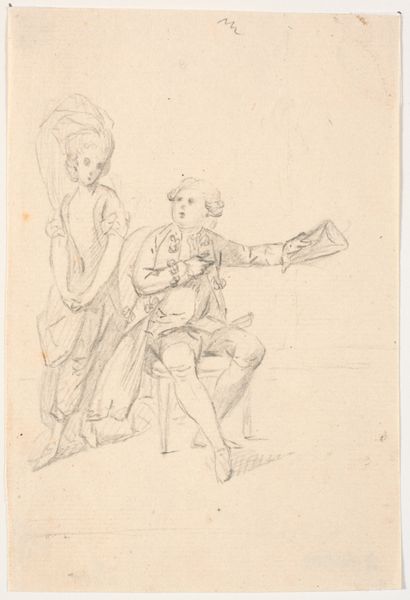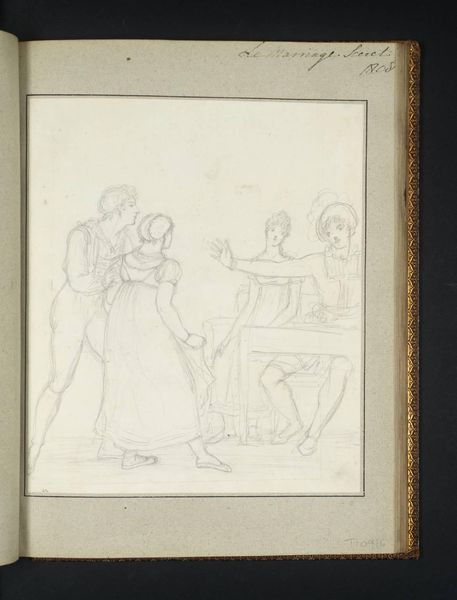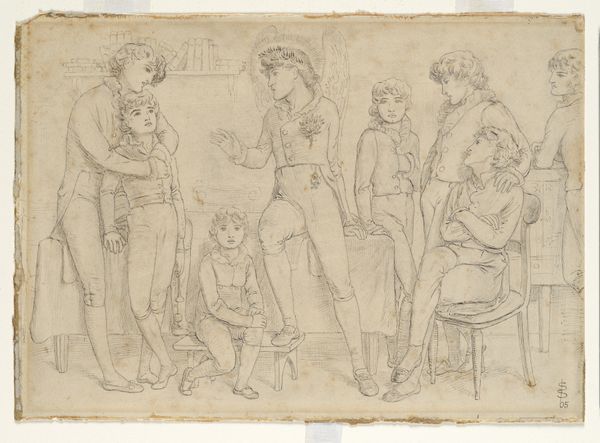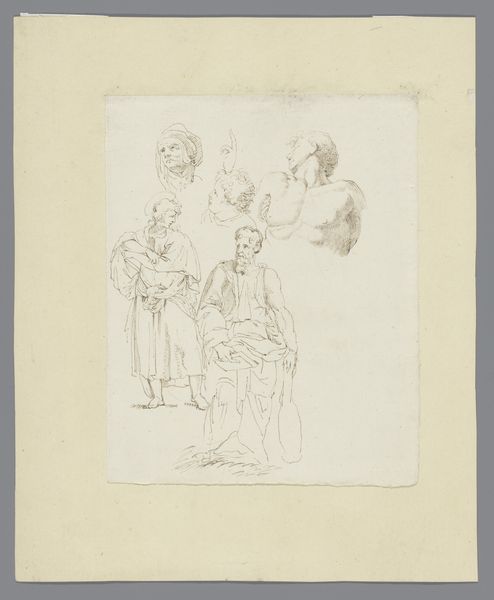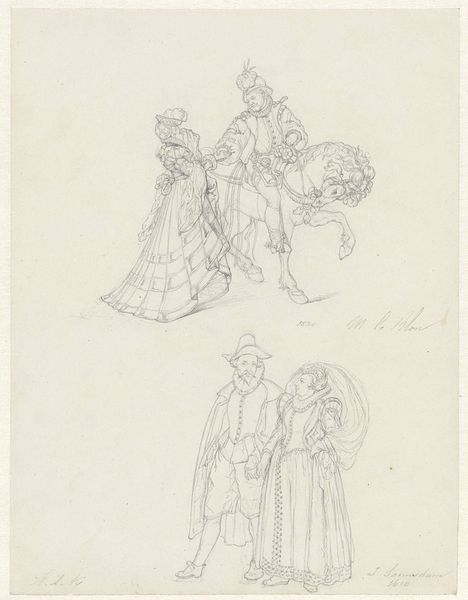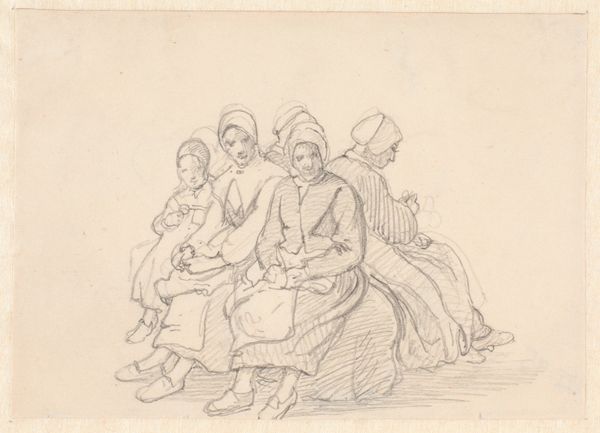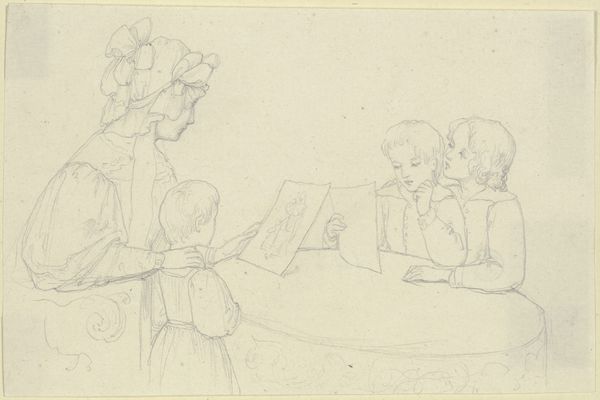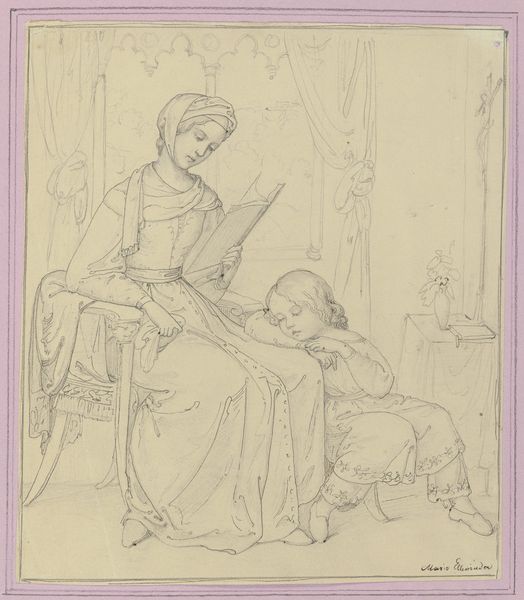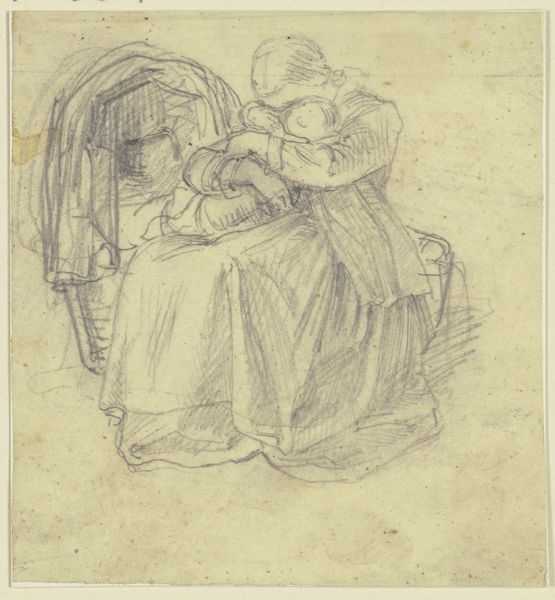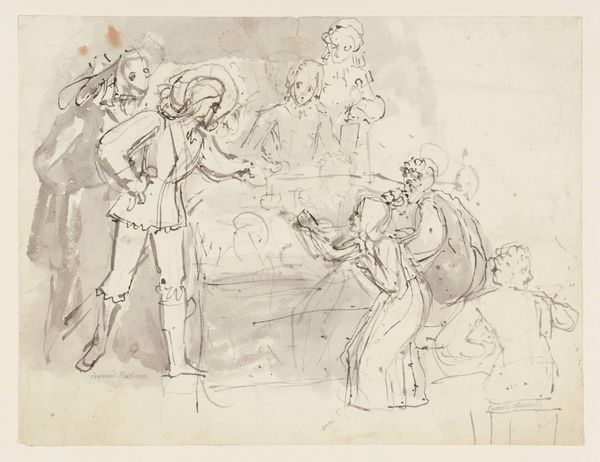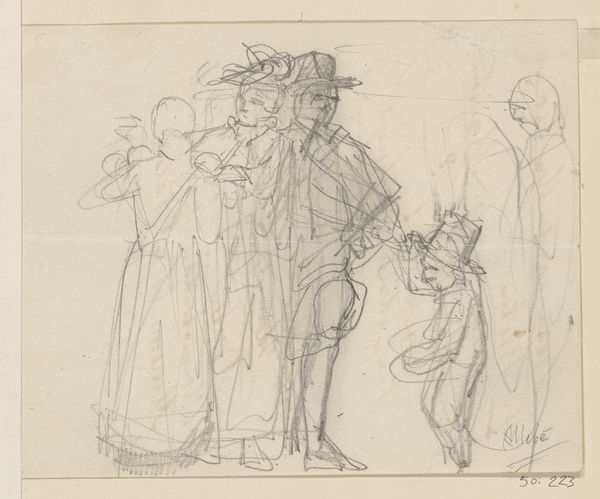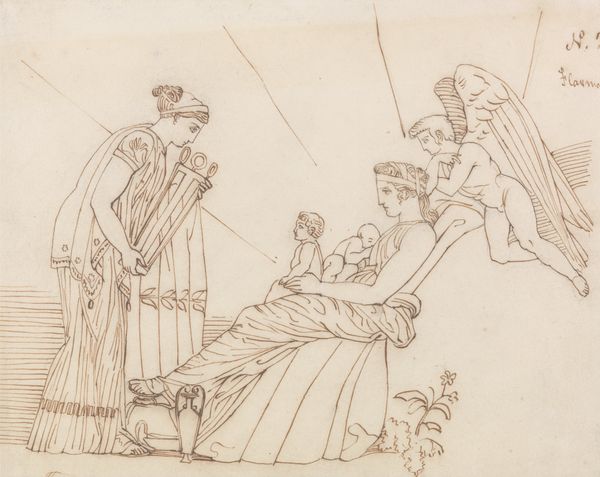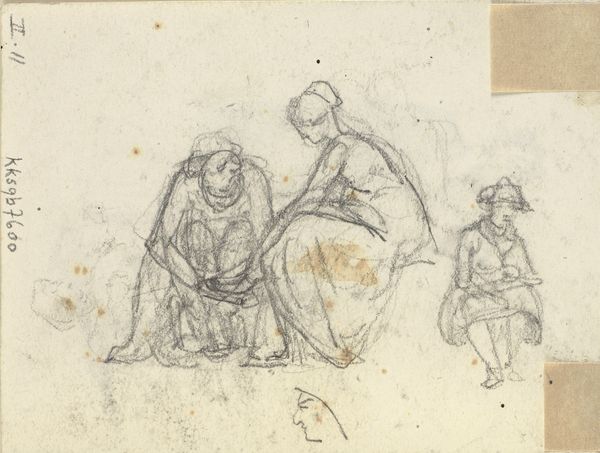
drawing, pencil
#
drawing
#
16_19th-century
#
narrative-art
#
figuration
#
pencil
#
history-painting
#
academic-art
Copyright: Public Domain
Curator: This spare pencil drawing, held at the Städel Museum, depicts "The Expulsion of Hagar." The artist is Friedrich Moosbrugger, though we don't have a firm date for its creation, it likely originates from the 19th century. What's your take when you look at it? Editor: Bleak, strangely bleak for such a biblical subject. There's this stark whiteness to the drawing, a sparseness that mirrors the abandonment in the story. All those blank spaces feel less empty and more…loaded. Curator: Moosbrugger clearly focuses on the emotional narrative rather than elaborate setting. It reflects academic art conventions, prioritizing clarity of form and gesture to convey the drama. Editor: Exactly! The lines are clean, almost cold. Abraham’s gesture, that pointing finger – it's so dismissive. There is such a harsh sense of social politics in this composition. I cannot even imagine their desperation as they go, and that gaze... The kid seems a little young. Curator: He really captures the pain, doesn’t he? But consider that Hagar was enslaved. This is less about familial love and more about patriarchal structures. What options do either have really? It is quite cutting. Editor: True, true. The historical context gives such complexity to a surface level narrative. I do not know if they teach people those narratives nowadays. They’ve been erased by modernity! Curator: Perhaps, but even now the resonance is quite impressive, despite how plainly it's delivered. Moosbrugger does not seem that fussed in making the piece pretty; there are clear gaps around the edges, and it makes me wonder if this piece was cut from a larger collection or simply an unfinished draft? Editor: Could be! Anyway, as a vignette it definitely sparks something in you; it’s this rawness of the execution that grabs you. A quiet kind of intensity; I think that is why the lack of flourishes speaks so much more. Curator: Ultimately, it’s a simple scene about an expulsion, but a great representation of how context transforms art. The composition allows these political dynamics to rise to the fore with relative ease. Editor: I’ll definitely think differently the next time I see it in the gallery! Thanks for helping clarify my first impression.
Comments
No comments
Be the first to comment and join the conversation on the ultimate creative platform.
